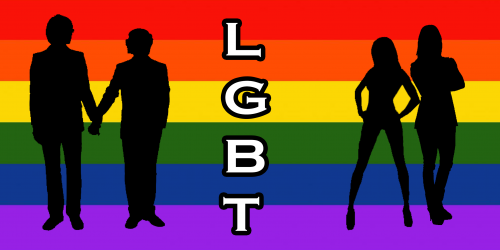Developing History Curriculum to Include LGBT Community
ELTON HO
REBECCA ZENG
Staff Writers
Although an estimated 3.8 percent of America’s population is a member of the Lesbian, Gay, Bisexual and Transgender (LGBT) community, according to the Williams Institute, the prominent roles in U.S. history of these people are almost entirely glossed over in social studies classes across the nation.
However, within the next few years, resources related to LGBT history will be provided to California schools by ONE National Gay & Lesbian Archives, one of the world’s largest research libraries on LGBT history. Through research and training of teachers, ONE hopes to establish a curriculum that effectively depicts the contributions of LGBT Americans.
The new curriculum is being developed because of the Fair, Accurate, Inclusive and Respectful Education Act (FAIR) that was passed by state senators in 2011. FAIR is the first national bill that requires schools to integrate age-appropriate information about the social movements, roles and contributions of LGBT people into social studies classes. It also prohibits the adoption of discriminatory materials based on factors such as gender or sexual orientation.
“For me, [the FAIR Act] was a dream come true, specifically [because of] all the students, teachers and parents who will benefit from it. It allows for opportunities of courage and self-realization,” Gay-Straight Alliance adviser Carlos Villagomez said.
The updated curriculum will be implemented within various grade levels. According to the Safe Schools Coalition, appropriate lessons for elementary school students include topics such as family diversity, gender stereotypes and anti-bullying. LGBT history comes more into focus for middle school and high school students, whose studies on civil rights movements will incorporate significant LGBT events such as the Stonewall riots, the Black Cat raid and the murder of gay college student Matthew Shepard. The curriculum will mostly be focused on the 1940s to the present day.
“Schools that perpetuate silence or harmful stereotypes about LGBT people can be breeding grounds for the fear and ignorance that fuel bullying […] and hate violence. Accurate depictions of LGBT Americans in classroom materials teach all students to respect each other’s differences, thereby increasing students’ sense of belonging and ability to learn,” the fact sheet from Equality California’s website stated.
At AHS, some students and teachers support how the FAIR Act gives LGBT Americans recognition.
“[LGBT events] should absolutely be covered. Anyone who makes a contribution to our country deserves every right to be a part of our history,” U.S. history teacher Jose Sanchez said.
However, there has been some opposition to this bill as well.
“[I don’t agree with the implementations.] Why do people make a big deal out of [the] LGBT community? What’s different about them is that they have a different sexual orientation,” a student who wished to remain anonymous said.
In 2011, some schools tested out the LGBT history implementation and received positive results, according to GLSEN.
“Students in schools with an LGBT-inclusive curriculum, [for example] one that included positive representations of LGBT people, history and events, heard fewer homophobic remarks, were less likely to feel unsafe because of their sexual orientation […], were more likely to report that their peers were accepting of LGBT people […] and felt more connected to their school,” an article from Think Progress said.
In recent times, the LGBT community has reached several milestones. These include the repeal of California’s Proposition 8, which defined marriage only as between a man and a woman, the ruling of the Defense of Marriage Act, which banned same-sex spouses from receiving marriage rights, as unconstitutional. Now, the introduction of LGBT history into California public schools will be added to the growing list of LGBT landmark occasions.
